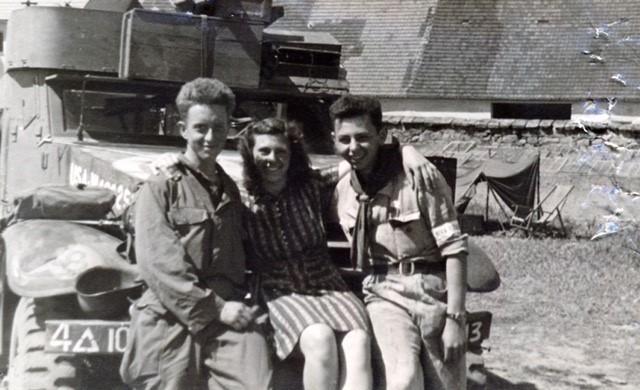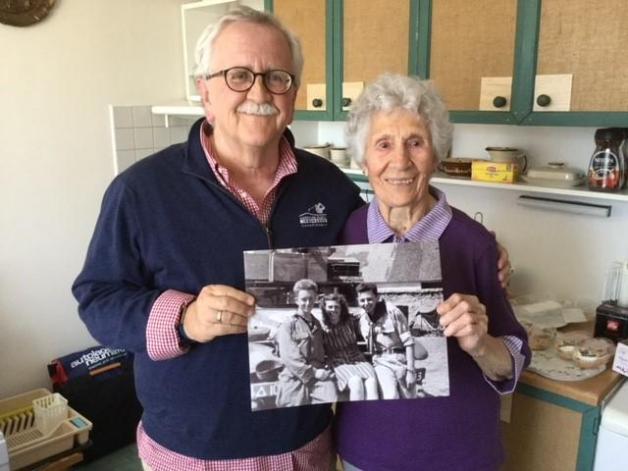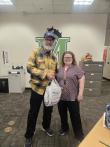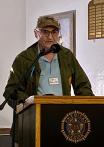The sepia tone gives the photo a sense of history. Three young people, teenagers really, leaning against a World War II truck bumper. All three look happy.
Happy because the war had ended less than 24 hours earlier and that meant no one would die today.
The three, a young boy in a Boy Scout uniform, a pretty girl in a striped dress, and an American GI wearing an expression of exhaustion, relief and happiness.
The GI is the one who touches my heart because it’s my dad, Paul Huffman. He was a 19-year-old tank driver in the 4th Armored Division. Landing in France after the D-Day invasion, he fought his way through the Battle of the Bulge, across Europe, and was in the small town of Blatná, then Czechoslovakia, the day the war ended.
I never knew the young man in the picture. He had an impressive mop of red hair, was kind of skinny, and had no clue of what life would hold for him over the next 50 years. The dad I grew up with was almost always tired from working too much but usually found time to play catch when I was a kid.
The young woman was the eternal mystery of the photograph. Her name, like most other details of the war, had faded as his hair thinned. Nudges and winks that maybe she was a girlfriend were always shut down.
Dad was always more interested in reminiscing about the Blatná villagers who treated the American soldiers as heroic liberators. When he died in 1987 I assumed any chance of finding the mystery girl were gone as well.
With a loving kick in the pants from a Slovak friend, herself a war baby, I started looking again. An email to the Czech ambassador in Washington led to Blatná’s mayor, Kateřina Malečková, which led to a feature story in the local newspaper.
Seven-plus decades after the war ended I assumed that was that. The woman was likely gone, but the article and the photo gave me a chance to tell Dad’s story and how he always remembered Blatná.
A few weeks later, Mayor Malečková sent the email that had me blinking in disbelief. “We found the lady,” she wrote. “She’s 92 and doing well.”
After 73 years, the mystery was over. Her name is Blažena Hrabĕtová, a retired shoemaker. After the war ended, just like my dad, she married, had two children, and got on with her life.
Then came the next surprise. Blažena wanted to meet me.
As did the mayor, who invited my wife, Carol, and I to represent my dad at their annual Liberation Day ceremonies marking the end of the war.
The lovely grandmother who opened the door had a beautiful smile. We stared at each other not knowing if we should hug or shake hands. We hugged.
Her memories of 1945 are soft. She didn’t remember my dad, but remembered the kindness of the American soldiers. Her mother washed uniforms and the soldiers paid with what were then unimaginable riches of coffee, chocolate and a canned ham.
After years of living through a Nazi occupation where you were always hungry and neighbors were murdered on a whim, even a hint of human decency must have been glorious.
We came to realize that Blažena’s family weren’t the only ones finding their own stories. While we were there, a local historian organized an event for the entire town. Elders sat in a community center looking at photographs taken during the liberation. The historian had the photos but no answers to who was in the pictures.
“That’s my sister,” one woman called out. Others brought out autograph books kept since childhood and shared the heartfelt messages written by American soldiers to the children who had become their adopted families.
“Roses are red, violets are blue
I’ll be far away but always thinking
of a nice little girl like you.”
Corporal Philip Ademinic
Chicago, Illinois
June 27, 1945
The Czechs may have been liberated by the Americans, but were ultimately abandoned behind the Iron Curtain in the name of peace. A stony silence became the new normal in life. The Russians forbade any mention of the Americans and the role they played in prosecuting the war. Mother Russia was the sole north star of their new reality until the collapse of Communism.
On this Liberation Day, it was hard not to get caught up in the emotions as Carol and I walked along side their parade. The mayor was there, as was a military attache from the American embassy, re-enactors dressed in WWII uniforms, and a few hundred local folks. We walked as a community to lay a wreath at Kalina’s Square, a monument honoring the dead.
It also hit me that I was walking the same streets my dad had during the actual liberation. He had survived a war and was blessed to find people like Blažena whose photo gave him a memory that lasted his lifetime. Because of my dad, Blatná embraced us as part of their own story. A story that will grow as Blažena and the others reclaim their history.
“This is probably the proudest day of my life,” I said blinking back my own tears. Asked to say a few words on behalf of my dad, I finally got to thank Blatná for opening their hearts and homes to not only him, but all of the American soldiers.
I had a hard time looking toward the re-enactors. One young “soldier,” a skinny kid with a big mop of red hair was there. Leaning against a jeep, he looked tired but smiled at me. He was still 19. Seventy-three years later, the soul of Corporal Paul Huffman was back in Blatná. And he was happy.
Watch a TV report on the case: https://www.nbc15.com/content/news/womaninthepicture-483629381.html
Editor's note: It’s believed the boy in the picture, Ladislav Vesely, left Blatna with the American troops and emigrated to the States.
Jerry Huffman is an Emmy Award-winning journalist. Currently a media consultant, Huffman lives in Fitchburg, Wis., with his wife and fellow writer, Carol Larson.





